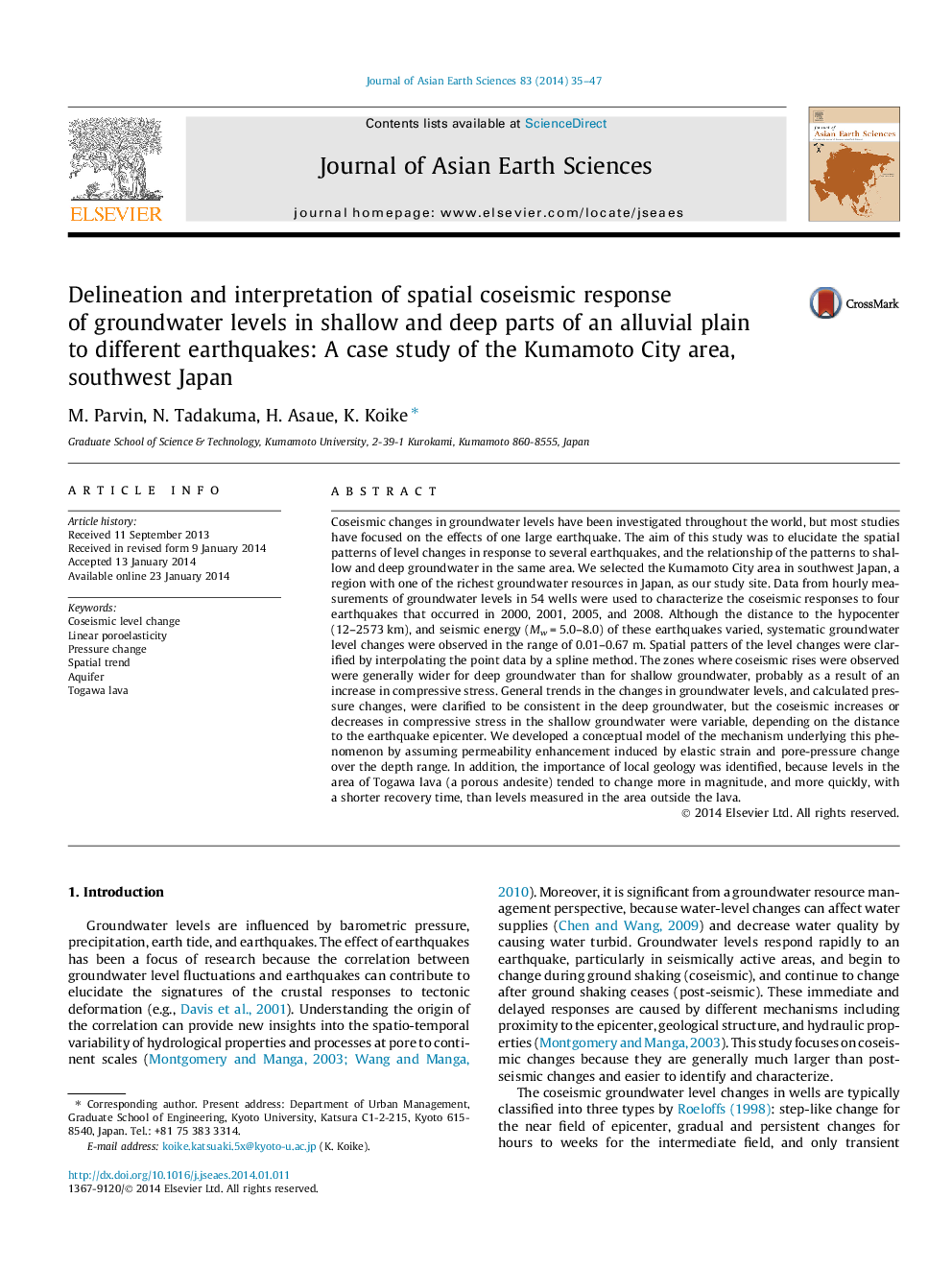| کد مقاله | کد نشریه | سال انتشار | مقاله انگلیسی | نسخه تمام متن |
|---|---|---|---|---|
| 4730786 | 1640385 | 2014 | 13 صفحه PDF | دانلود رایگان |
Coseismic changes in groundwater levels have been investigated throughout the world, but most studies have focused on the effects of one large earthquake. The aim of this study was to elucidate the spatial patterns of level changes in response to several earthquakes, and the relationship of the patterns to shallow and deep groundwater in the same area. We selected the Kumamoto City area in southwest Japan, a region with one of the richest groundwater resources in Japan, as our study site. Data from hourly measurements of groundwater levels in 54 wells were used to characterize the coseismic responses to four earthquakes that occurred in 2000, 2001, 2005, and 2008. Although the distance to the hypocenter (12–2573 km), and seismic energy (Mw = 5.0–8.0) of these earthquakes varied, systematic groundwater level changes were observed in the range of 0.01–0.67 m. Spatial patters of the level changes were clarified by interpolating the point data by a spline method. The zones where coseismic rises were observed were generally wider for deep groundwater than for shallow groundwater, probably as a result of an increase in compressive stress. General trends in the changes in groundwater levels, and calculated pressure changes, were clarified to be consistent in the deep groundwater, but the coseismic increases or decreases in compressive stress in the shallow groundwater were variable, depending on the distance to the earthquake epicenter. We developed a conceptual model of the mechanism underlying this phenomenon by assuming permeability enhancement induced by elastic strain and pore-pressure change over the depth range. In addition, the importance of local geology was identified, because levels in the area of Togawa lava (a porous andesite) tended to change more in magnitude, and more quickly, with a shorter recovery time, than levels measured in the area outside the lava.
Figure optionsDownload as PowerPoint slide
Journal: Journal of Asian Earth Sciences - Volume 83, 1 April 2014, Pages 35–47
